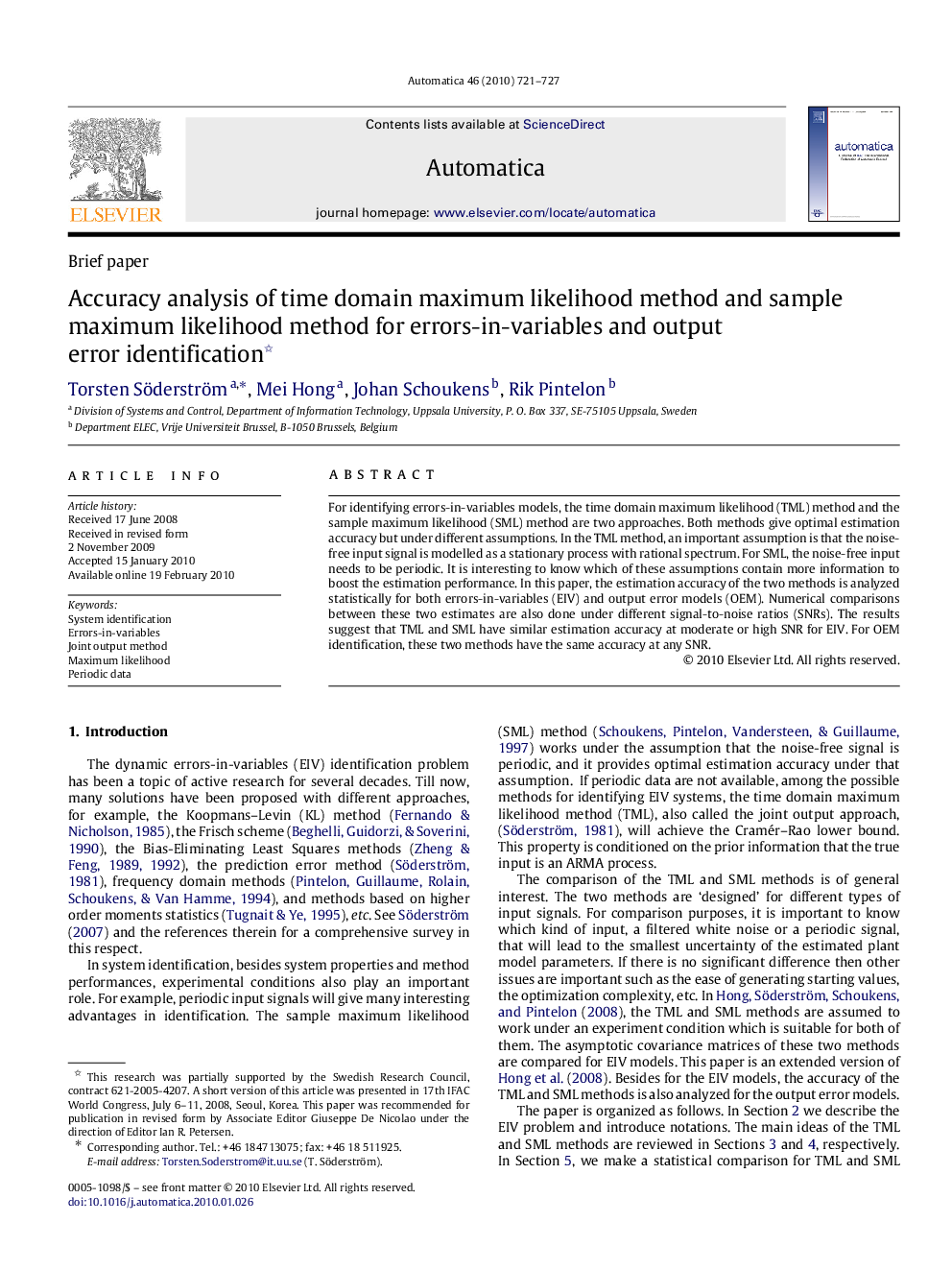| Article ID | Journal | Published Year | Pages | File Type |
|---|---|---|---|---|
| 696568 | Automatica | 2010 | 7 Pages |
Abstract
For identifying errors-in-variables models, the time domain maximum likelihood (TML) method and the sample maximum likelihood (SML) method are two approaches. Both methods give optimal estimation accuracy but under different assumptions. In the TML method, an important assumption is that the noise-free input signal is modelled as a stationary process with rational spectrum. For SML, the noise-free input needs to be periodic. It is interesting to know which of these assumptions contain more information to boost the estimation performance. In this paper, the estimation accuracy of the two methods is analyzed statistically for both errors-in-variables (EIV) and output error models (OEM). Numerical comparisons between these two estimates are also done under different signal-to-noise ratios (SNRs). The results suggest that TML and SML have similar estimation accuracy at moderate or high SNR for EIV. For OEM identification, these two methods have the same accuracy at any SNR.
Related Topics
Physical Sciences and Engineering
Engineering
Control and Systems Engineering
Authors
Torsten Söderström, Mei Hong, Johan Schoukens, Rik Pintelon,
